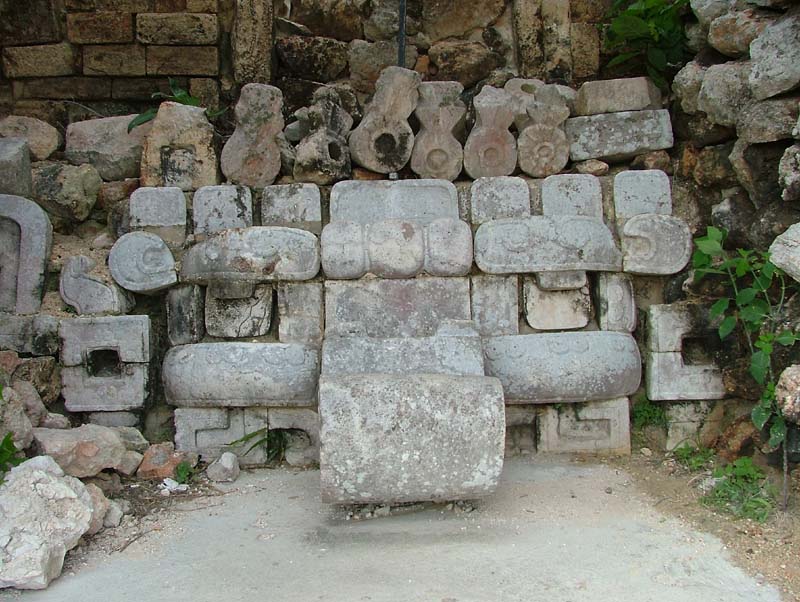

Southwest of the House of the Governor is the Great Pyramid, a massive mound with an ornamented temple at its summit and fronting a sunken courtyard.

In 1936, Pollack wrote: "This great structure, the largest pyramid at Uxmal, lies immediately southwest of the Governor's Palace and east of the House of the Pigeons Complex. The sides strewn with loose rock and covered with rank vegetation, the pyramid has presented in modern time a somewhat amorphous appearance: only the tumbled remains of some vaults show at the base of the mound and a few decorative details are visible near the summit. It is presumably for this reason that so imposing a mass has received relatively little attention from writers on Uxmal."
H.E.D. Pollack, The Puuc, p. 244

The temple atop the Great Pyramid. The rough stone cobbles on the frieze indicate areas where the building has been consolidated by archaeologists and the original decoration has been lost. The area of the frieze is decorated with volutes symbolizing wind and storms related to the rain god.

A pattern of wind volutes appears to be part of the wall decoration behind the Chaac altar. Perhaps the current temple is a newer build-out of an older structure.

The round "blue ribbon" shaped stones stacked above the Chac mask have been identified by Linda Schele (in conjunction with her description of the iconography of the South Building of the Nunnery Quadrangle) as "small flower designs that read as itz.
In Yukatek, itz refers to substances like nectar, tree sap, candle wax, morning dew, and other sacred liquids. Itz also means "to make magic," so that this building is a house where magic was made. In ancient Maya parlance, this makes...this building an Itzam Nah, a Conjuring House."
Schele & Mathews, The Code of Kings, p. 265

The stonework here is earlier than that at the House of the Governor or the Nunnery Quadrangle. It is in transition from stones imprecisely cut and finished with stucco to a fully developed pure mosaic technique without the use of stucco. Stucco fill can be seen here filling the fairly large spaces between the cut stone elements.

Note the tiny faces peering out from within the mandibles of the larger mask.

Kowalski maintains that the masks atop the Great Pyramid are an intermediate step between earlier masks found at Uxmal Structure 1 and the later deeply cut mask mosaics at the House of the Governor: "Here the orbital plates are large, rounded forms with imprecise and lightly carved interior detail. This contrasts with the deeply cut detail on the corresponding pieces of the House of the Governor.

The grand Pyramid with its crowning temple seen from the platform of the House of Governor at sunrise.